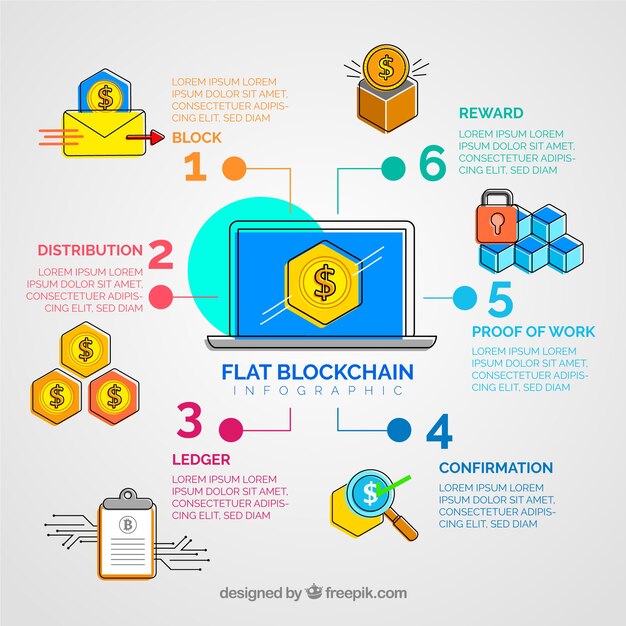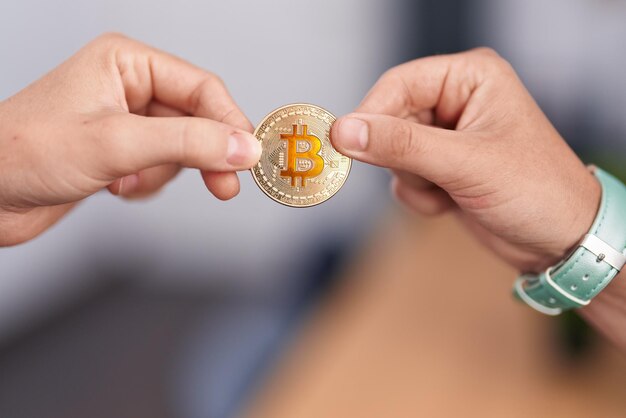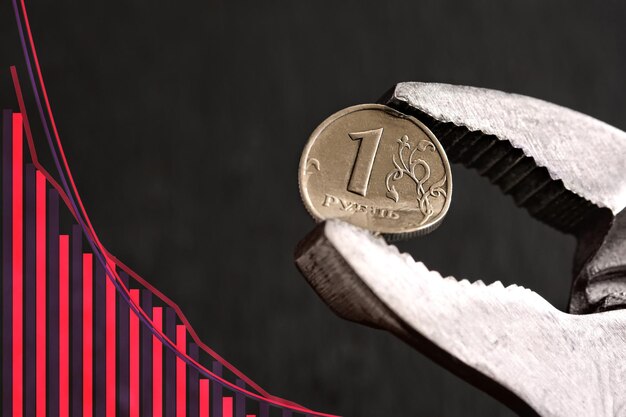Beginner’s Guide: How to Mine Litecoin (LTC) Step-by-Step
In today’s ever-evolving digital landscape, the concept of cryptocurrency has taken center stage. Among the plethora of digital currencies available, Litecoin, often referred to as the silver to Bitcoin’s gold, has gained significant traction. With its unique features and promising potential, it has piqued the interest of investors and enthusiasts alike.
But what fuels the existence of Litecoin, and how does one acquire it? This article aims to demystify the intricate process of Litecoin mining, providing a comprehensive guide for beginners and experienced miners alike. Whether you’re looking to delve into a new investment avenue or simply expand your knowledge about the world of cryptocurrencies, this article is your gateway to understanding the ins and outs of Litecoin mining.
Before delving into the technicalities, it is essential to grasp the fundamental concepts of mining in the cryptocurrency realm. Mining, in its simplest form, refers to the process of validating and recording transactions on a blockchain network. It is the backbone of any digital currency system, ensuring the integrity, transparency, and security of transactions.
Unlike traditional mining involving physical labor, Litecoin mining harnesses the power of computational resources. Miners engage in complex mathematical calculations, competing against one another to solve intricate puzzles. The first miner to successfully solve the puzzle is rewarded with newly minted Litecoins, thereby providing them with an incentive to continue mining. This decentralized process maintains the distributed nature of cryptocurrencies, making them immune to manipulation and control from any central authority.
A Beginner’s Guide to Litecoin Mining
Mining Litecoin can be an intriguing and profitable endeavor for those interested in the world of cryptocurrency. In this guide, we will explore the fundamental concepts and processes involved in Litecoin mining, providing beginners with a comprehensive understanding of how to get started in this exciting field.
Understanding Litecoin Mining
When it comes to cryptocurrency mining, Litecoin stands as one of the most popular alternatives to Bitcoin. Similar to Bitcoin, Litecoin operates on a decentralized network and utilizes a blockchain to record and verify transactions. However, it differentiates itself by employing a different hashing algorithm known as Scrypt.
Litecoin mining involves solving complex mathematical problems to validate and secure transactions on the Litecoin network. Miners contribute their computational power to solve these puzzles, and in return, they are rewarded with new Litecoin coins. This process not only helps maintain the integrity of the network but also ensures the creation of new coins.
Getting Started with Litecoin Mining
Before diving into Litecoin mining, it is vital to have a basic understanding of the hardware and software requirements. The mining process necessitates specialized mining hardware, such as ASICs (Application-Specific Integrated Circuits), to ensure efficient and profitable mining operations.
In addition to hardware, miners also need to set up mining software and join a mining pool. Mining pools allow individual miners to combine their resources and increase their chances of solving a block, thus earning more frequent rewards. Joining a reputable mining pool can significantly enhance a beginner’s mining experience.
Once you have acquired the necessary hardware and software, the next step is to configure your mining rig and connect it to a mining pool. It is crucial to ensure that your mining rig is properly cooled and optimized for energy efficiency to maximize your mining potential.
Continuing Your Learning Journey
Mining Litecoin is a constantly evolving field. As a beginner, it is essential to stay updated with the latest industry trends and developments. Engaging in online communities and forums can provide valuable insights and allow for knowledge-sharing among fellow miners.
Moreover, exploring additional resources, such as online tutorials, guides, and podcasts, can provide in-depth knowledge on advanced mining techniques, troubleshooting common issues, and optimizing your mining setup for better performance.
- Develop a clear understanding of Litecoin mining hardware requirements.
- Join a reputable mining pool to increase your chances of earning rewards.
- Configure your mining rig for optimal performance and cooling.
- Stay updated with the latest industry trends and actively engage in online communities.
- Explore additional resources to enhance your mining knowledge and skills.
By following this beginner’s guide to Litecoin mining, you will be equipped with the necessary knowledge and tools to embark on your mining journey successfully. Remember, perseverance and continuous learning are key to becoming a proficient miner.
Understanding Litecoin and Its Mining Process
In this section, we will delve into the intricacies of Litecoin and explore the fundamental concepts behind its mining process. By gaining a comprehensive understanding of Litecoin and how it is mined, you will be equipped with the knowledge to participate in this cryptocurrency network effectively.
Exploring the Unique Features of Litecoin
LTC, a decentralized digital currency, is an alternative to Bitcoin that offers several unique features. Understanding these features is crucial for comprehending its mining process. Litecoin operates on an open-source software protocol and utilizes a peer-to-peer network for transactions, similar to Bitcoin.
One distinguishing feature of Litecoin is its faster block generation time. In comparison to Bitcoin’s 10-minute block time, Litecoin generates new blocks every 2.5 minutes. This shorter block time enables faster transaction confirmations, contributing to Litecoin’s efficiency and reliability.
LTC also employs the Scrypt hashing algorithm for its mining process. Unlike Bitcoin’s SHA-256 algorithm, Scrypt is memory-hard and resistant to ASIC-based mining. This characteristic fosters wider participation in Litecoin mining, as it discourages the concentration of mining power in the hands of a few specialized hardware manufacturers.
The Mining Process of Litecoin
Litecoin mining involves the process of verifying and adding transactions to the Litecoin blockchain. Miners play a crucial role in this decentralized network by ensuring the integrity and security of transactions.
The mining process begins with miners collecting pending transactions and organizing them into a block. They then compete to solve a mathematical puzzle, known as the proof-of-work algorithm, to find a specific nonce that will allow them to create a valid block. This process requires significant computational power and energy expenditure.
Once a miner successfully solves the puzzle and creates a valid block, they broadcast it to the network. Other miners then verify the legitimacy of the block and its transactions before adding it to the blockchain. Miners are rewarded with a certain amount of newly minted LTC and transaction fees for their efforts.
It is important to note that as more miners participate in the network, the difficulty of the mining puzzle increases. This adjustment mechanism ensures that blocks are generated at a consistent rate. As a result, mining Litecoin becomes more challenging over time, requiring advanced hardware and substantial electricity consumption.
By understanding the unique features of Litecoin and the intricacies of its mining process, you are now equipped with the knowledge to explore the world of Litecoin mining. Remember to stay updated with the latest developments and practices in this constantly evolving field to maximize your mining efficiency and profitability.
The Benefits of Mining Litecoin
Mining Litecoin offers a multitude of advantages for both individual miners and the overall cryptocurrency ecosystem. By engaging in the process of mining Litecoin, individuals have the opportunity to contribute to the network’s security, earn rewards, and participate in the decentralized nature of cryptocurrencies.
One of the key benefits of mining Litecoin is the role it plays in securing the network. As miners validate and confirm transactions, they help maintain the integrity and reliability of the Litecoin blockchain. This decentralized approach ensures that no single entity has control over the network, making it resistant to censorship and manipulation.
Additionally, mining Litecoin provides individuals with the opportunity to earn rewards for their computational efforts. As miners solve complex mathematical problems, they are eligible to receive newly minted Litecoin as a reward. These rewards not only compensate miners for their resources and electricity costs but also serve as an incentive to contribute to the network’s operation.
Moreover, mining Litecoin allows individuals to actively participate in the cryptocurrency ecosystem. By being part of the mining process, individuals become stakeholders in the network, influencing its development and decision-making processes. This involvement creates a sense of community and empowers individuals to have a say in the future of Litecoin.
Furthermore, mining Litecoin can be a profitable endeavor. With careful planning, optimization of mining equipment, and consideration of market conditions, miners can generate a steady income stream. As Litecoin continues to gain popularity and adoption, the potential for financial rewards from mining increases, making it an attractive option for individuals seeking additional income.
In conclusion, mining Litecoin offers numerous benefits, ranging from contributing to network security and earning rewards to actively participating in the decentralization of cryptocurrencies. It provides individuals with a chance to be part of a growing community and potentially generate income while supporting a digital currency that has the potential to revolutionize the financial industry.
Choosing the Right Hardware for Litecoin Mining
When it comes to diving into the world of Litecoin mining, one of the most crucial decisions you’ll have to make is choosing the right hardware for the job. The hardware you select will directly impact your mining efficiency, performance, and ultimately, your potential profitability. This section provides valuable insights and considerations to help you make an informed decision.
Setting Up a Litecoin Mining Rig
Setting up a rig for mining Litecoin involves several crucial steps that are essential to ensure a smooth and efficient mining process. In this section, we will explore the necessary components and procedures for setting up your own mining rig.
To begin, it is important to gather the hardware components required for mining. These components include a powerful graphics processing unit (GPU), sufficient random access memory (RAM), a solid-state drive (SSD) for storage, and a reliable power supply unit (PSU). Additionally, you will need to acquire a motherboard that supports multiple GPUs, as well as specialized mining software.
Once you have obtained the necessary hardware, the next step is to assemble the mining rig. Begin by carefully connecting the motherboard to the power supply and attaching the necessary cables. Next, install the GPU onto the motherboard and ensure it is firmly secured. It is critical to use thermal paste to facilitate heat dissipation and prevent overheating of the components.
After assembling the rig, it is time to set up the mining software. This involves downloading and installing a Litecoin mining application compatible with your operating system. Configure the software by providing the necessary details such as your Litecoin wallet address and mining pool information. It is advisable to join a mining pool to increase your chances of earning consistent rewards.
To optimize the performance of your mining rig, it is essential to fine-tune the settings. Adjust the GPU clock and memory speeds, as well as the power limits, to achieve the optimal balance between hash rate and energy efficiency. Keep in mind that monitoring the temperature of your rig is crucial, as excessive heat can affect performance and potentially damage components.
In conclusion, setting up a Litecoin mining rig requires careful consideration of hardware components, assembling the rig accurately, installing appropriate mining software, and optimizing the settings for maximum efficiency. By following these steps, you will be well on your way to successfully mining Litecoin and potentially earning rewards for your efforts.
Joining a Mining Pool for Increased Efficiency
Collaborating with other miners in a mining pool can greatly enhance the efficiency and profitability of your Litecoin mining endeavors. By joining forces with a group of like-minded individuals, you can combine your resources and increase your chances of successfully mining Litecoin blocks.
The Power of Pooling Resources
When mining alone, the competition to find a new block and receive the associated rewards can be intense. However, by joining a mining pool, you can leverage the collective power of multiple miners working towards a common goal. This pooling of resources allows for a more consistent and stable stream of Litecoin rewards.
Distribution of Workload and Rewards
Within a mining pool, each participant is assigned a portion of the mining workload. This division of labor significantly increases the chances of finding new blocks and earning rewards. Additionally, the rewards earned by the pool are distributed among the members based on their individual contributions, ensuring a fair distribution of profits.
By joining a mining pool, you can access specialized mining equipment and technologies that may be beyond your individual reach. These resources, combined with the expertise and knowledge of other pool members, can greatly enhance your mining efficiency.
It is important to carefully choose a reputable and reliable mining pool that suits your needs. Research the pool’s reputation, fees, and payout policies before joining. Collaborating with other miners through a mining pool is a strategic approach to Litecoin mining that can maximize your efficiency and profitability in this competitive field.
Optimizing Litecoin Mining for Profitability and Sustainability
Mining cryptocurrencies, like Litecoin, presents an opportunity for individuals to potentially earn profits while contributing to the sustainability of the network. This section explores various strategies and considerations to optimize Litecoin mining, with a focus on enhancing profitability and ensuring long-term sustainability.
Calculating Profitability
Before delving into optimization techniques, it is essential to understand the factors that influence profitability in Litecoin mining. These factors include the current Litecoin price, mining difficulty, electricity costs, mining hardware efficiency, and operational expenses. By accurately calculating the profitability, miners can make informed decisions on resource allocation and potential returns.
Choosing the Right Mining Hardware
One crucial aspect of optimizing Litecoin mining is selecting the appropriate mining hardware. As technology advances, newer and more efficient mining equipment becomes available, enabling miners to achieve higher hash rates with lower energy consumption. It is important to research and compare different hardware options to find the optimal balance between upfront investment costs, energy efficiency, and performance.
Note: It is vital to stay updated on emerging mining technologies and consider factors like power consumption, hashing power, and cost-effectiveness.
Additionally, miners should consider the power supply requirements of their chosen hardware to ensure stability and avoid potential issues. Adequate cooling mechanisms and proper ventilation are also crucial to maximize hardware lifespan and prevent overheating.
Efficient Mining Pool Selection
Joining a mining pool can improve the chances of earning consistent mining rewards. When selecting a mining pool, factors such as pool fees, reputation, pool size, and payment methods should be considered. It is recommended to choose a pool with a low fee structure and a robust infrastructure to ensure efficient and reliable mining operations.
Note: Regularly monitoring the performance and reliability of the selected mining pool is essential to avoid potential pitfalls.
Furthermore, diversifying mining across multiple pools can help mitigate risks associated with pool downtime or instability. By distributing mining power, miners can ensure a more steady income stream and minimize the impact of unforeseen circumstances.
Optimizing Energy Efficiency
Reducing energy consumption is not only beneficial for miners in terms of operational costs but also contributes to the sustainability of Litecoin mining. Implementing energy-efficient practices, such as utilizing renewable energy sources or optimizing cooling systems, can significantly decrease electricity expenses and lower the environmental impact of mining operations.
Note: Regularly monitoring and optimizing the mining rig’s power usage is crucial for identifying opportunities for energy efficiency improvements.
In conclusion, optimizing Litecoin mining for profitability and sustainability involves a combination of strategic decision-making, hardware selection, pool management, and energy-efficient practices. By following these guidelines and continuously adapting to changing market dynamics, miners can increase their chances of success and contribute to the long-term viability of Litecoin mining.
Questions and answers: How to mine litecoin
What is Litecoin mining?
Litecoin mining is the process by which new Litecoin coins are created and transactions are verified on the Litecoin network. Miners use powerful computers to solve complex mathematical problems, and in return, they are rewarded with newly minted Litecoin coins.
Is Litecoin mining profitable?
Whether Litecoin mining is profitable or not depends on several factors, such as the cost of electricity, the price of Litecoin, the efficiency of mining hardware, and the mining difficulty. It is essential to consider these factors and calculate the potential profitability before getting into Litecoin mining.
What do I need to start Litecoin mining?
To start Litecoin mining, you will need specialized mining hardware, such as ASIC (Application-Specific Integrated Circuit) miners, a stable internet connection, a mining software, and a Litecoin wallet to store your earnings.
How can I choose the right mining hardware for Litecoin mining?
When choosing mining hardware for Litecoin mining, you should consider factors such as the hashing power, energy efficiency, cost, and availability. It is recommended to research and compare different mining hardware options before making a purchase.
What is the process of mining Litecoin?
The process of mining Litecoin involves solving complex mathematical problems using mining hardware. Miners compete to find a solution, and the one who solves it first adds the next block of transactions to the Litecoin blockchain. This process requires significant computational power and rewards the successful miner with a certain number of newly created Litecoin coins.
What is Litecoin mining and how does it work?
Litecoin mining is the process of validating and adding new transactions to the Litecoin blockchain. Miners use their computational power to solve complex mathematical puzzles, which helps secure the network and earns them new Litecoins as a reward.
How do you start mining cryptocurrencies like Bitcoin or Litecoin?
You can start mining cryptocurrencies like Bitcoin or Litecoin by setting up mining hardware, installing mining software, and joining a mining pool or mining solo.
What is Bitcoin mining, and how does it work?
Bitcoin mining is the process of validating transactions and adding them to the blockchain by solving complex mathematical problems using computational power. Miners compete to solve these problems, and the first to do so receives a reward in the form of newly minted bitcoins.
What is solo mining, and how does it differ from pool mining?
Solo mining is when an individual miner attempts to mine blocks independently without joining a mining pool. In contrast, pool mining involves multiple miners combining their computational power to increase their chances of successfully mining blocks and sharing the rewards.
How can you determine the profitability of mining cryptocurrencies?
The profitability of mining cryptocurrencies depends on factors such as the cost of electricity, mining hardware efficiency, mining difficulty, and the current market price of the mined cryptocurrency. Various online calculators and tools can help estimate mining profitability.
What is a Litecoin miner, and how does it differ from a Bitcoin miner?
A Litecoin miner is a device or software application specifically designed to mine Litecoin, a cryptocurrency similar to Bitcoin but using a different mining algorithm. While Bitcoin miners use the SHA-256 algorithm, Litecoin miners use the Scrypt algorithm.
Can you mine cryptocurrencies using a CPU (Central Processing Unit)?
Yes, some cryptocurrencies can be mined using a CPU, especially in the early stages of their existence or if they are designed to be CPU-minable. However, many cryptocurrencies now require specialized hardware such as ASICs or GPUs for efficient mining.
What is a mining algorithm, and why is it important for mining cryptocurrencies?
A mining algorithm is a set of rules or mathematical calculations used by miners to validate transactions and create new blocks in a blockchain. It is important because it determines the method by which miners compete to solve computational puzzles and earn rewards.
When considering CPU or GPU mining, which factors should miners take into account?
When considering CPU or GPU mining, miners should consider factors such as the mining algorithm used by the cryptocurrency, the computational power of their hardware, energy efficiency, and the potential return on investment.
Are there cryptocurrencies that are still profitable to mine using CPU or GPU?
Yes, some cryptocurrencies are still profitable to mine using CPU or GPU, especially newer or lesser-known cryptocurrencies with lower mining difficulty or designed to be mined with consumer-grade hardware.
How does the choice between CPU and GPU mining impact mining efficiency and profitability?
The choice between CPU and GPU mining can impact mining efficiency and profitability based on factors such as mining algorithm, hardware cost, energy consumption, and mining difficulty. GPUs typically offer higher computational power and efficiency compared to CPUs for many mining algorithms.
How can someone start mining Litecoin?
You can start mining Litecoin by setting up mining hardware, installing mining software, and joining a Litecoin mining pool or mining solo.
What is a Litecoin mining pool, and how does it differ from solo mining?
A Litecoin mining pool is a group of miners who combine their computational power to increase their chances of successfully mining blocks and sharing the rewards. Solo mining involves mining independently without joining a pool.
Is cloud mining a viable option for mining Litecoin?
Cloud mining can be an option for mining Litecoin, but it’s important to research and evaluate the reputation and reliability of cloud mining providers, as well as consider the associated costs and potential risks.
What factors affect the profitability of mining Litecoin?
The profitability of mining Litecoin depends on factors such as mining difficulty, the cost of electricity, hardware efficiency, Litecoin’s market price, and any associated fees or expenses.
How does Litecoin mining differ from Bitcoin mining?
Litecoin mining works similarly to Bitcoin mining, but Litecoin uses a different mining algorithm (Scrypt) and has a faster block generation time, resulting in quicker transaction confirmations.
Can Litecoin be mined using a CPU?
Yes, Litecoin can be mined using a CPU, especially in the early stages or with less competition. However, for optimal efficiency, miners often use specialized hardware such as ASICs or GPUs.
What role does a Litecoin wallet play in Litecoin mining?
A Litecoin wallet is necessary to receive and store mined Litecoins. Miners need to set up a Litecoin wallet to store their earnings and manage their mining operations.
How does joining a mining pool impact Litecoin mining profitability?
Joining a mining pool can increase the chances of earning rewards more frequently, as miners combine their computational power. However, rewards are shared among pool members, so individual payouts may be smaller but more consistent.
What is the Litecoin halving, and how does it affect Litecoin mining profitability?
The Litecoin halving is an event that occurs approximately every four years, where the block reward for mining Litecoin is reduced by half. This event can impact Litecoin mining profitability by reducing the rate at which new Litecoins are created.
What hardware is suitable for mining Litecoin?
ASIC mining hardware is commonly used for mining Litecoin due to its efficiency and performance. However, GPUs and CPUs can also be used, depending on the mining setup and preferences of the miner.







No responses yet